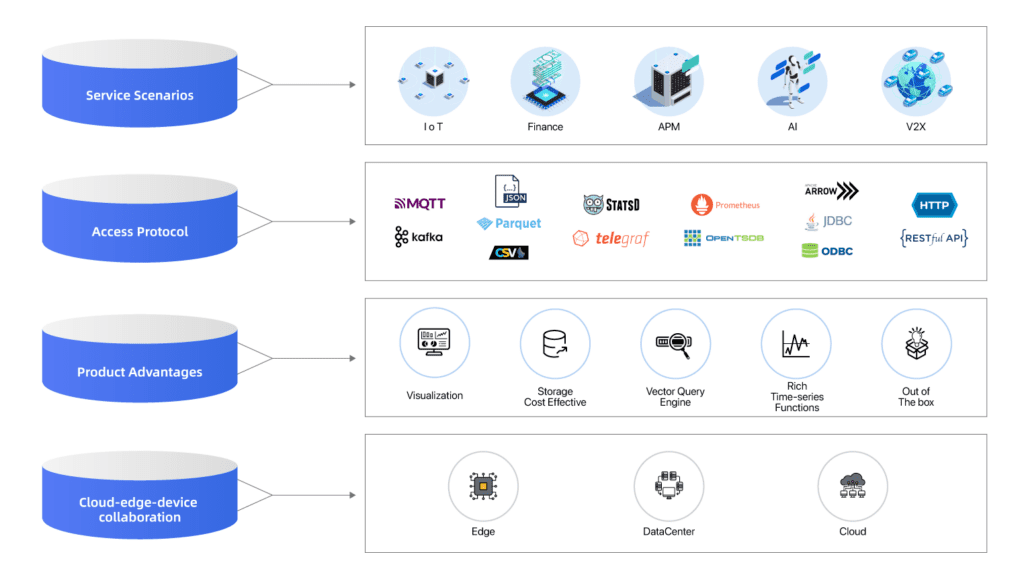Cloud Native Time-Series Database
CnosDB 2.0
2.0 Design Ideas
CnosDB is a high-performance, high-compression, and easy-to-use open-source distributed time-series database. It is primarily used in fields such as IoT, industrial internet, connected cars, and IT operations. All of the code is open-sourced and available on GitHub.
In its design, we fully utilize the characteristics of time-series data, including structured data, non-transactions, fewer deletions and updates, more writes and less reads, etc. As a result, CnosDB has a number of advantages that set it apart from other time-series databases:
Community Edition
Free, open source, eco-friendly
- A fully open source product based on the Rust language, integrating with the existing time-series ecosystem
- Use distributed clusters for free with no functional limitations
- Rapid product iteration prioritizes ultimate product features
- Supported by a wide range of open source community users and developer communities
Enterprise Edition
Private cloud, expert support
- Cloud-native friendly, supports various server and container environments
- High-performance, high-availability distributed clusters with customizable management and operation tools
- Product fault support with up to 7x24 response time
- Flexible pricing model, low-cost access to Enterprise Edition
CnosDB Cloud
Serverless, Out-of-the-box
- Cloud-native serverless, fully leveraging the convenience of cloud infrastructure and integrating seamlessly into cloud-native ecosystems
- Out-of-the-box, elastic scaling support, supporting bidirectional resource expansion of storage and computing
- Native multi-tenant and pay-as-you-go models for lower costs
- Liberate operations engineers from heavy workloads and easily manage cloud services
- Integrated with cloud-native OLAP/CIoudAl data ecosystem
CnosDB Embedded
A collaborative embedded time-series database for cloud and edge
- Ultra-light kernel for embedded devices
- Supports deployment on ARM/Raspberry Pi and other edge architectures
- Truly achieves a cloud-edge integrated data model
- Collaboration between cloud and edge with multi-level storage for cost control
Product advantages
High Performance
CnosDB addresses the issue of time-series data expansion and theoretically supports unlimited time-series data. It supports aggregate queries along the timeline, including queries divided by equal intervals, queries divided by enumeration values of a column, and queries divided by the length of the time interval between adjacent time-series records. It also has caching capabilities for the latest data and the cache space can be configured for fast access to the latest data.
Easy to use
CnosDB provides clear and simple interfaces, easy configuration options, standard SQL support, seamless integration with third-party tools, and convenient data access functions. It supports schema-less writing mode and supports historical data supplement(including out of order writing).
Cloud Native
CnosDB has a native distributed design, data sharding and partitioning, separation of storage and computing, Quorum mechanism, Kubernetes deployment and complete observability, ensuring final consistency. It can be deployed in public clouds, private clouds, and hybrid clouds. t also supports multi-tenancy and has role-based permission control. The computing and storage nodes support horizontal scaling.
Architecture

